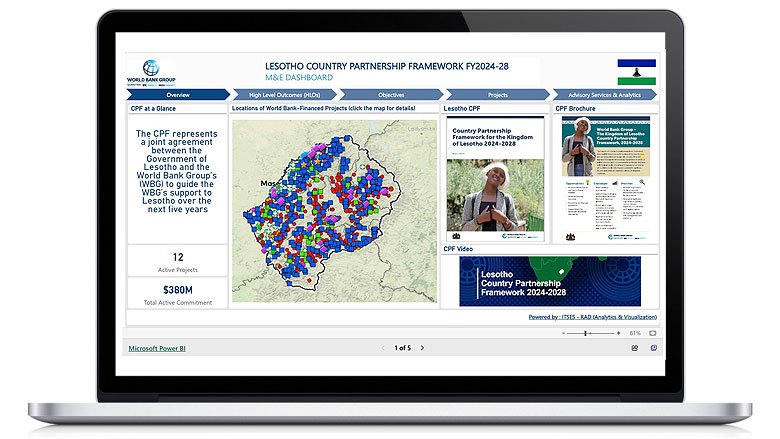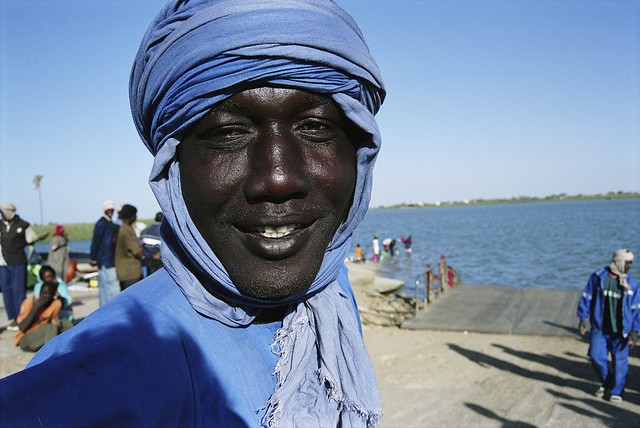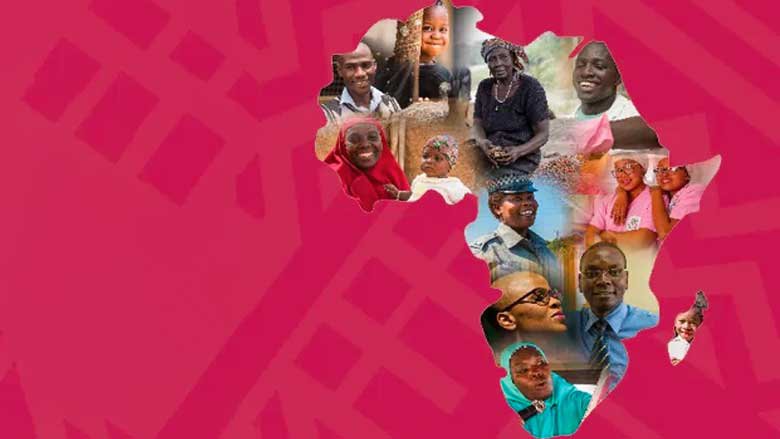Lesotho is a small, mountainous country landlocked by South Africa, with a population of about 2.3 million and a per capita GDP of $1,106.5 in 2024. Classified as a lower middle-income country, it gained independence from Britain in October 1966. Lesotho is a constitutional monarchy with a King as Head of State, and a parliament comprising a Senate and National Assembly. While the King serves as the Head of State, his role is largely ceremonial, with executive powers residing with the government. The current government, in power since November 2022, is led by Prime Minister Samuel Ntsokoane Matekane’s Revolution for Prosperity (RFP) party in coalition with Movement for Economic Change (MEC), Alliance for Democrats (AD), and Basotho Action Party (BAP) parties.
The government extended Lesotho’s Second National Strategic Development Plan (NSPD II) 2018/19–22/23 for another five years until 2027/28. The NSPD II’s four priorities are enhancing inclusive and sustainable economic growth and private sector-led job creation, strengthening human capital, building enabling infrastructure, and strengthening national governance and accountability systems.
Recent Economic Developments and Outlook
Lesotho’s economy grew by an estimated 2.3 % in 2024, up from 1.8 % in 2023. This increase is explained by construction activities, particularly the Lesotho Highlands Water Project – Phase II (LHWP-II), the Lesotho Lowlands Water Development Project - Phase II (LLDWP-II), and other government capital investment, such as roads. These projects generated positive spillover effects in the local services industry, further supporting economic growth. By contrast, export-oriented sectors like textiles, clothing, and mining underperformed due to weaker foreign demand and lower commodity prices. However, the labor market remains weak, and high unemployment and poverty levels persist.
Headline inflation dropped to 3.6 % in January 2025 from 5.2 % in September 2023, due to lower fuel and food prices and a stronger Rand, which reduced imported inflation. The Central Bank of Lesotho reduced the policy rate by a cumulative 50 basis points from 7.75 % in November 2024 to 7.25 % per annum in February 2025. In 2024, Lesotho reported an exceptionally high fiscal surplus of 8.8 % of GDP driven by increased Southern African Customs Union (SACU) revenues (from 14.4 % in 2022 to 27.8 % of GDP in 2024) and higher water royalties (from 3.7 % in 2022 to 7.2 % of GDP in 2024). The increase in revenues was not accompanied by a concomitant rise in public expenditures due to existing rigidities in capital spending and some restraint in recurrent spending. Authorities also used part of the budget surplus to pay 1.8 % of GDP in arrears but about 0.6 % of GDP remains to be cleared.
Despite fiscal surpluses, public debt rose to 59.2 % of GDP in 2024 as the government continues to borrow from both domestic and external markets. Most public debt is contracted from external sources, accounting for about 82% of total debt, while domestic sources contribute the remaining 18% in 2024. External and domestic debt stood at 47.3% and 11.9% of GDP in 2024, respectively. Lesotho’s risk of external and overall debt distress remains moderate with limited space to absorb shocks.
The current account balance shifted from a deficit of 6.4 % of GDP in 2023 to a surplus of 4.4 % of GDP in 2024, supported by higher remittances, and increased interest income SACU revenue. The trade deficit also improved, driven by water royalties.
After a short-lived increase to 3.0 % in 2025, the economy is projected to return to its historical trend of 2 % growth in the medium-term. Lesotho’s growth outlook remains closely tied to the LHWP-II project, with limited prospects beyond its timeframe under current policies and external conditions. Private investment is projected to remain subdued and, consequently, employment growth will be limited and insufficient to reduce the poverty rate.
Inflation is projected to moderate to around 5%, reducing the gap vis-à-vis South Africa. Monetary policy will continue to align closely with regional market rates. The current account is expected to gradually return to a deficit over the medium term due to higher imports linked to the LHWP-II and lower SACU revenues, partly offset by increased water royalties. Lower SACU revenues, pressures on recurrent spending and efforts to lift capital expenditure will gradually reduce the fiscal surplus.
Risks to economic growth are tilted to the downside and have risen given the recent development in the global environment. Uncertainty surrounding the future of bilateral aid could increase social tensions and public spending pressures, as an important share of health-related programs are financed by the United States (US). Delays in the implementation of Millenium Challenge Corporation (MCC) Compact II ($300 million) would hinder growth, job creation, and exports prospects over the medium and longer term. Failure to extend the African Growth and Opportunity Act (AGOA) beyond September 2025 could negatively impact textile exports to the US, leading to an increase in unemployment. Domestic risks are also present, including political instability, and fiscal mismanagement that could reduce fiscal buffers. Conversely, a bold program of reforms to improve fiscal policy management, including through the adoption of fiscal rules and establishment of a revenue stabilization fund, easing of business conditions, and facilitation of trade and international investment could enhance economic performance and social development.
Development challenges
Lesotho struggles with development due to its geography and economic dependence. The country's rugged, mountainous terrain makes infrastructure development and agricultural productivity difficult. Limited arable land and unpredictable weather patterns exacerbate food insecurity, impacting the livelihoods of a large portion of the population reliant on subsistence farming. Moreover, Lesotho's economic dependence on South Africa, both for employment and trade, leaves it vulnerable to external economic fluctuations and policies.
Poverty and inequality remain significant challenges. Despite efforts to improve living standards, a significant portion of Lesotho's population lives below the poverty line, with rural areas being particularly affected. Access to basic services such as healthcare, education, and clean water remains limited, contributing to poor health outcomes and educational attainment. High rates of HIV/AIDS and tuberculosis further strain the healthcare system, reducing the workforce and increasing the dependency ratio.
Governance and political instability also pose substantial hurdles to development in Lesotho. Frequent changes in government and political unrest disrupt policy continuity and implementation, impeding long-term development plans. Corruption and weak institutions erode public trust and hinder development. Tackling these issues needs a comprehensive approach: strengthen governance, diversify the economy, and invest in human capital and infrastructure to build resilience and self-sufficiency.
Last Updated: Mar 31, 2025









